List of all original Apple-1.
If you are a first time visitor and not familiar with iconic Apple-1 computers, please read all the information first.
Go to previous entry #103 - Go to first entry #1
Note: This is the 104th entry in the list, and not the 104th Apple-1 produced. The Apple-1 does not have a regular serial number. Only some Apple-1 have a handwritten serial number.
 Apple-1 #104 "Redington", 2nd batch NTI
Apple-1 #104 "Redington", 2nd batch NTI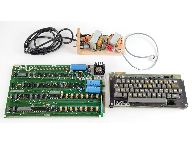 Apple-1 #104 "Redington", 2nd batch NTI
Apple-1 #104 "Redington", 2nd batch NTI Apple-1 #104 "Redington", 2nd batch NTI
Apple-1 #104 "Redington", 2nd batch NTI Apple-1 #104 "Redington", 2nd batch NTI
Apple-1 #104 "Redington", 2nd batch NTI Apple-1 #104 "Redington", 2nd batch NTI
Apple-1 #104 "Redington", 2nd batch NTI Apple-1 #104 "Redington", 2nd batch NTI
Apple-1 #104 "Redington", 2nd batch NTI Apple-1 #104 "Redington", 2nd batch NTI
Apple-1 #104 "Redington", 2nd batch NTI Apple-1 #104 "Redington", 2nd batch NTI
Apple-1 #104 "Redington", 2nd batch NTI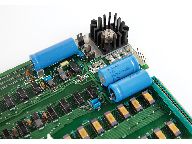 Apple-1 #104 "Redington", 2nd batch NTI
Apple-1 #104 "Redington", 2nd batch NTI Apple-1 #104 "Redington", 2nd batch NTI
Apple-1 #104 "Redington", 2nd batch NTI Apple-1 #104 "Redington", 2nd batch NTI
Apple-1 #104 "Redington", 2nd batch NTI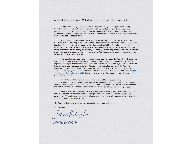 Apple-1 #104 "Redington", 2nd batch NTI
Apple-1 #104 "Redington", 2nd batch NTI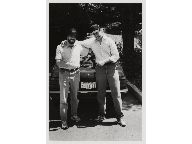 Apple-1 #104 "Redington", 2nd batch NTI
Apple-1 #104 "Redington", 2nd batch NTI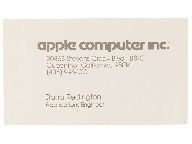
• Original Apple-1 'NTI' board, with label annotated "4062"
• Original Apple Cassette Interface (ACI) board
• Period Cherry mechanical keyboard (circa 1974) with Apple-1 compatible interface cable
• Linear power supply wired for an Apple-1, based on two Triad transformers (F31X and F40X) mounted on a wooden frame
• Modern Insignia LCD TV/video monitor with Apple-1 compatible video cable
• Detailed letter of provenance from Dana Redington, discussing his employment at Apple and his receipt of this board
• Dana Redington's Apple Computer business card, listing the address as 20863 Stevens Creek Blvd. in Cupertino
• Original photograph of Dana Redington and Steve Wozniak posing with the Datsun 280ZX, license plate "APPLEII," used in a 1983 TV commercial
This Apple-1 computer was restored and brought to an operational state in June 2024 by Apple-1 expert Corey Cohen. Upon initial visual inspection, this Apple-1 was missing or had damage to components including all integrated circuit chips, PROMs, 'Big Blue' capacitors, three regulators, four power diodes, a crystal oscillator, and various other components. Cohen made all board-level repairs using new old stock components. Where available, all socketed components were replaced with period-correct and manufacturer-correct components. In the process, Cohen prepared a comprehensive technical report documenting the condition and restoration of the board, as well as a 'proof of life' video demonstrating its functionality, which are available to qualified bidders.
In his report, Cohen notes that the condition of the board supports the notion that it comes from the "trade-in pile," which has been documented by other early Apple employees as being located in Steve Jobs’ office. The board's ceramic capacitors exhibit some cosmetic marring, "likely from being in the 'pile' of Apple-1 boards in Steve Jobs’ office, where another Apple-1 board placed on top of this board had its IC socket legs"
The Apple-1 was originally conceived by Steve Jobs and Steve ‘Woz’ Wozniak as a bare circuit board to be sold as a kit and completed by electronics hobbyists, their initial market being Palo Alto’s Homebrew Computer Club. Seeking a larger audience, Jobs approached Paul Terrell, owner of The Byte Shop in Mountain View, California, one of the first personal computer stores in the world. Aiming to elevate the computer beyond the realm of the hobbyist, Terrell agreed to purchase 50 Apple-1 computers, but only if they were fully assembled. The Apple-1 thus became one of the first ‘personal’ computers that did not require soldering by the end user. Altogether, over a span of about ten months from 1976–77, Steve Jobs and Steve Wozniak produced about 200 Apple-1 computers, selling 175 of them. Building on that success, they introduced the Apple II in June 1977, which became one of the world's first highly successful mass-produced microcomputer products.
The first known owner, Dana Redington, joined Apple Computer after visiting Steve Wozniak—a former neighbor and fellow graduate of Cupertino's Homestead High School—in April 1977 at the 'Good Earth building' on Stevens Creek Boulevard to demonstrate some programs he had written. Woz introduced Dana to Mike Markkula, who immediately offered him a job. He was the company's first applications software engineer, developing programs for the Apple II. Redington reflects: "I developed several demonstration programs, including a hands-free, eye-controlled version of Breakout using face electrodes, and a Star Wars-inspired program that highlighted the Apple II's high-resolution color graphics, animation, sound, and custom fonts. Woz showed it to Steve Jobs, but Jobs, not being a programmer, didn't see much value in it at the time."
In a 2013 interview with *Game Informer*, Wozniak reflected on Redington's work: "We had this guy, Dana Redington. He did the first high-res game with some little spaceships going by, and you'd point your gun at them and shoot them down. We called it Star Wars at first, but we had to change the name eventually. He did this great game, and Steve thought it was really lousy. I admired his work so much, and yet he got dismissed by Steve."
Redington was abruptly let go in mid-1978, as Jobs began focusing more on a business-oriented approach to software development. He would go on to pursue software innovation in high-tech startups and medical research, receiving patents for a multi-state speech encoder/decoder and a psychophysiological reflex arc training simulator.
Dana Redington sold the Apple-1 at RR Auction on August 22, 2024, for US$ 315,914.
Aug 2024
(see History for more information)
not original CPU Signetics 6502 (7735), not original PIA AMI S6820P (7752), not original 8K Mostek MK4027P-3 (7702). 7 blue and one yellow capacitor. Not original PROMs and many other ICs are not original as well.
Proof of live June 2024
Before you click on video links, make sure you have read and accepted the disclaimer regarding YouTube links, in accordance with the European Data Protection Law (2016/679).
Jul 27, 2025
Jul 17, 2024: Newly added to the Apple-1 Registry
Jul 17, 2024: 14 picture(s) added
Sep 27, 2024: Description of picture(s)/video(s)
Sep 27, 2024: Description. History added
Sep 27, 2024: Video link(s) added. Components added
Jul 27, 2025: Description. History
We appreciate your help:
Please spread the word about the Apple-1 Registry by adding a link to your social media account and/or website. Contact us if you have new information about any Apple-1 or Apple-1 (parts) for sale.
You can link to the Apple-1 Registry. Any form of reprint or reproduction (including excerpts) is only allowed with written permission from the Apple-1 Registry.
Here you will find press releases and images free to use under CC BY-SA 4.0.